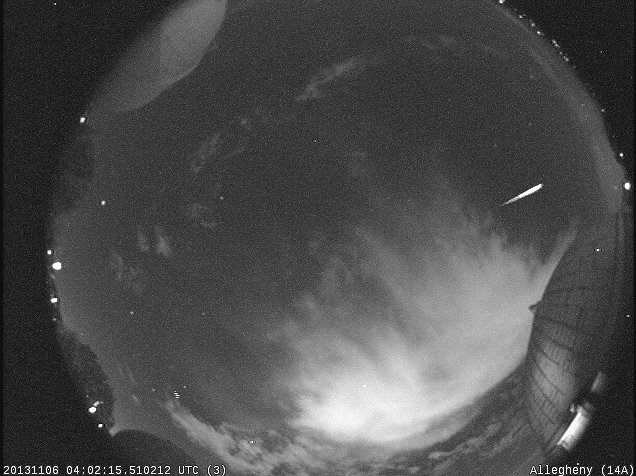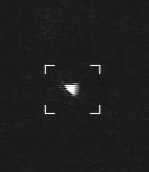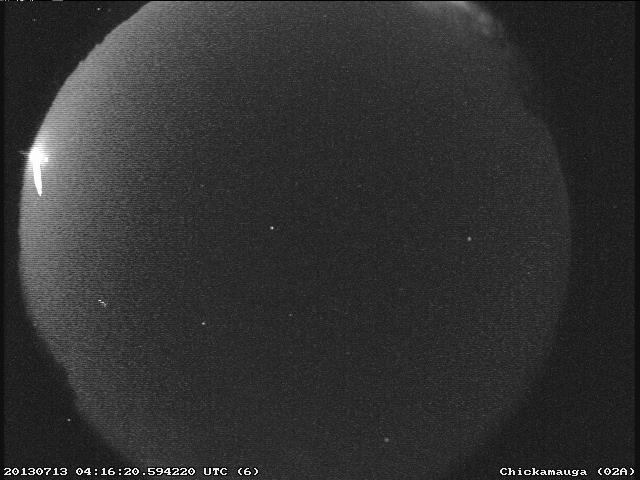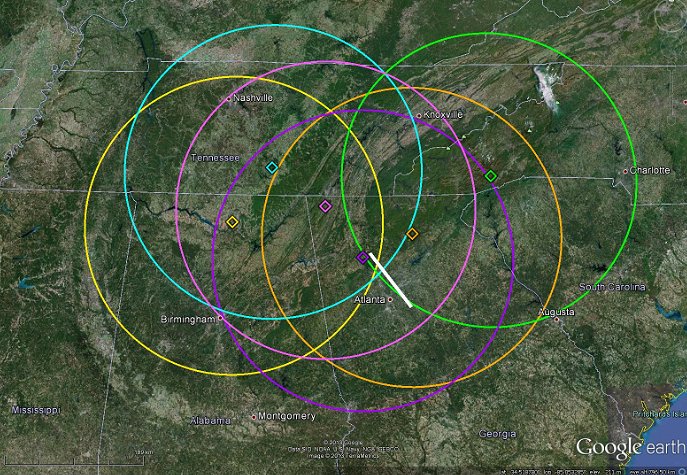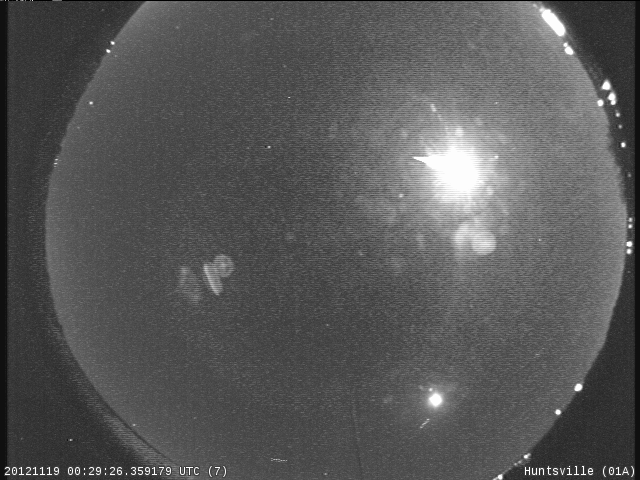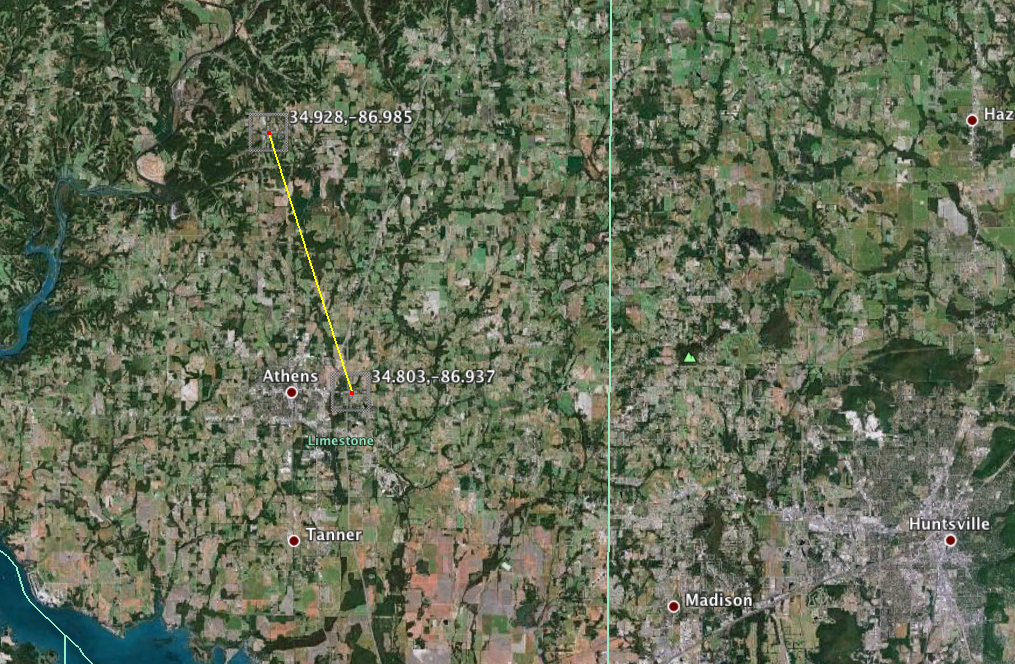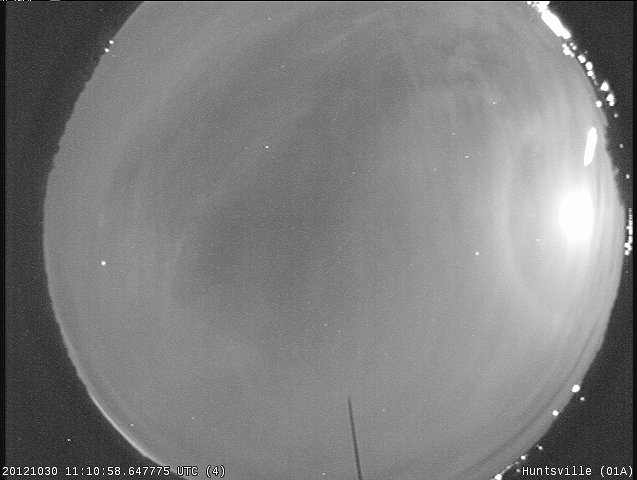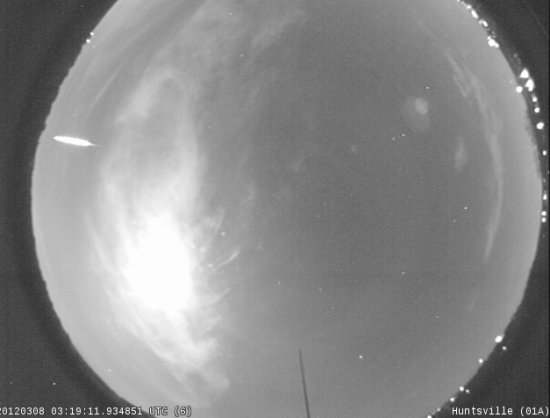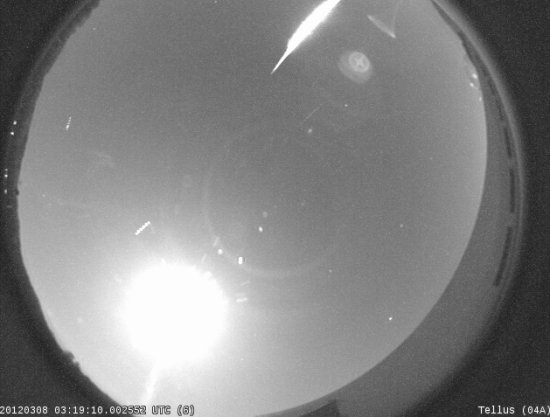The American Meteor Society has received over 80 reports from the public about a bright fireball seen on July 13, 2013 at 04:16:18 UTC (corresponding to July 13, 2013 at 00:16:18 EDT). Fireball sightings range from Georgia and South Carolina up through Virginia, West Virginia and Kentucky, with most coming from North Carolina.
The NASA All Sky Fireball Network detected this fireball with four cameras stationed in Chickamauga, Georgia, Tullahoma, Tennessee, Dahlonega, Georgia, and Cartersville, Georgia. The event was just on the edge of the field of view in each camera, but bright enough to get the attention of the NASA Meteoroid Environment Office in Huntsville, Alabama, the engineers who run the NASA Network.
Preliminary analysis of NASA data indicates that this fireball came in at a speed of 28.1 km/s (62,900 mph) at an angle of 32 degrees from horizontal. The 600 g (1.3 lb) body was first picked up over Stanley, North Carolina at an altitude of 66.1 km (41 miles) and ablated most if not all of its mass away until it was last detected at 22.6 km (14 miles) over Morganton, North Carolina.
If you observed this fireball you can make a report to the American Meteor Society. If you’d like to look through more images/movies of meteors please visit the NASA All Sky Fireball Network.
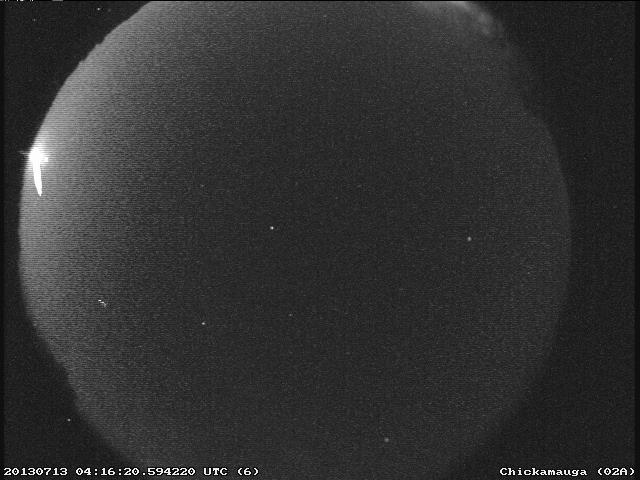 Image of the North Carolina fireball of July 13, 2013 taken by the NASA All Sky Fireball Network camera in Chickamauga, Georgia. The fireball exhibited a bright flare towards the end of its path. (Image Credit: NASA MEO)
Image of the North Carolina fireball of July 13, 2013 taken by the NASA All Sky Fireball Network camera in Chickamauga, Georgia. The fireball exhibited a bright flare towards the end of its path. (Image Credit: NASA MEO)

The fireball trajectory is shown as a green line – the meteor moved from southeast to northwest. The southeastern branch of the NASA All Sky Fireball Network is shown as diamonds – red diamonds indicate that the fireball was observed from that station. Stations with a black diamond did not observe the fireball due to weather or geometry. Observer report information (blue people symbols) is taken from the American Meteor Society. (Image Credit: NASA MEO)









